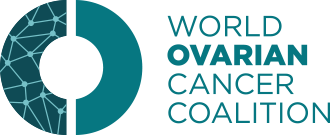Thursday, May 13, 2021 – Released today in the Lancet, the disappointing results from the UK Collaborative Trial of Ovarian Cancer Screening (UKCTOCS) study only underscore the urgency to develop new screening tools for ovarian cancer, a disease that is often diagnosed at late, less treatable, stages.
UKCTOCS was the largest study of its kind. Starting in 2001, the study focused on the two mainstay tools of the time, CA125 and ultrasound, to see if they could be used to detect ovarian cancer before symptoms develop, thereby allowing women a better chance at survival.
Initial results 6 years ago found that annual CA125 tests followed up with ultrasound for those with abnormal results, did indeed detect more ovarian cancers at an early stage versus no screening at all. However, with a lack of evidence that this would save lives, this did not translate into a recommendation to develop a screening programme. The results published today have given researchers time to fully analyse the longer-term impact of the screening. Unfortunately, the conclusion is that this kind of screening progamme, for asymptomatic women with no family history of the disease, would not be effective in saving lives.
Clara MacKay, CEO, of the World Ovarian Cancer Coalition:
“Sadly, the findings confirm that this approach to screening does not save lives. However, it is important to note that in the years since the UKCTOCS trial was launched, our understanding of how different types of ovarian cancer start and spread has grown considerably.”
“The lack of an imminent ovarian cancer screening programme, in the way that we have breast and bowel cancer screening programmes, reinforces the vital importance of women seeking help when they experience symptoms, and doctors acting quickly on those concerns. Whilst CA125 and TransVaginal Ultrasound are not suitable for screening women without symptoms, there is very good evidence that they are currently the best way to find women experiencing symptoms who may have ovarian cancer and need further assessment. It’s so important that process happens promptly. Our Every Woman StudyTM showed that the average time to diagnosis from symptom onset was six months. In that time a considerable proportion of women will become too unwell to ultimately start and tolerate treatment. This is something we must overcome. “
This is particularly important since the development of new treatments and approaches to surgery, which can offer significant benefits to women. Whilst the result is disappointing to the global ovarian cancer community, Clara MacKay does see hope on the horizon:
“With more conversations in the clinical community focusing on molecular profiling and performance status rather than disease staging, there is a lot of exciting work being done in research. And while the UKCTOCS study itself did not yield the results we had hoped for, it may still yet prove to be fruitful. With a biobank of samples spanning several years from women who went on to develop ovarian or other types of cancer, there is an invaluable resource for researchers to tap into as they work to find new ways to detect ovarian cancer sooner than we ever have before – paving the way for screening tools for the future.”
About Ovarian Cancer:
‘Ovarian cancer’ is not a singular diagnosis, rather it is an umbrella term for a multitude of different types of cancer that affect the ovaries, fallopian tubes, and the primary peritoneal cavity. It is estimated that there are more than 30 different types of ovarian cancer, and there is a very wide variation in incidence and outlook in terms of the different types.
According to Globocan’s 2020 projections, by 2040, the number of women around the world diagnosed with ovarian cancer will rise almost 42% to 445,721. The number of women dying from ovarian cancer each year is projected to increase to 313,617 an increase of over 50% from 2020.
Five-year ovarian cancer survival rates vary between countries. For example, in more developed countries, current rates range from 36% to 46%. However, in some countries the figure is much lower. Overall, survival rates fall well below that for other cancers, like breast cancer, where five-year survival rates in many countries are close to 90%.
For more information:
Clara MacKay, CEO
World Ovarian Cancer Coalition
cmackay@worldovariancancercoalition.org
Media Contact:
Phaedra Charlton, Director of Communications and Marketing
World Ovarian Cancer Coalition
phaedra@worldovariancancercoalition.org
For a PDF of this statement click [here]
